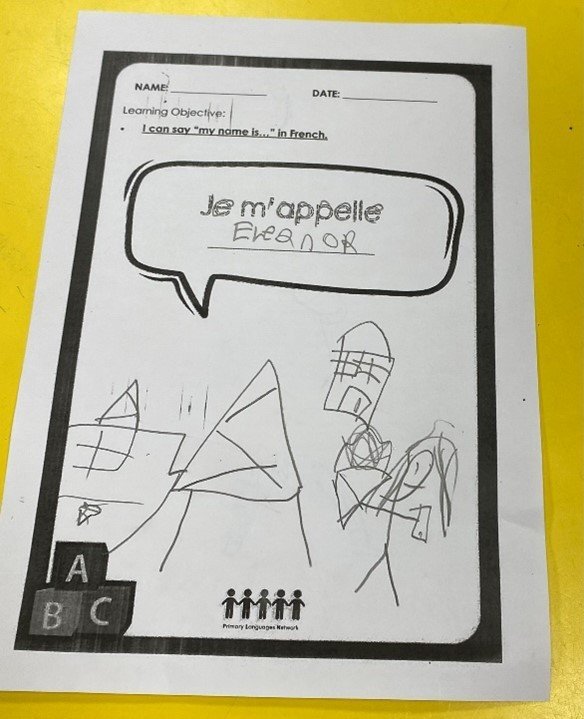How to teach languages to younger learners?
Here in England, foreign languages have been part of the KS2 foundation curriculum since 2014. Children are entitled to learn a foreign language from the age of 7 years old. But what about starting it earlier? And what do you focus on if there isn’t a Programme of Study to guide you? How long and how often should you teach? What about writing and phonics – are the children going to get mixed up?
In this blog post, I would like to address all these concerns and put your mind at rest because ‘yes’ we believe that with language learning earlier is better!
We know that it is harder to learn a language as we get older and a vast number of studies points us toward starting learning a second language early.
What to include in your SOW?
At PLN we have written our own Language Objectives for KS1 learning in line with other aspects of the broader curriculum for EYFS and KS1 such as developing communication and social skills (listening and responding, taking turns, etc.), nurturing curiosity, empathy and tolerance, supporting the development of gross and fine motor skills, confidence boosting… all of this with a strong emphasis on having fun!
Our brand new ‘KS1 language explorers’ SOW is made up of: Let’s begin and Let’s Explore. Let’s Begin correspond to the 1st year of language learning and Let’s Explore is made up of 12 interchangeable units to cover 2 years of language learning.
In Let’s Explore, each unit is self-contained and no prior learning is needed to access any of the 12 units. We focus on the development of ‘soft skills’ rather than a progression based on vocabulary.
What should you teach?
Topics are age-appropriate and include dinosaurs, mini beasts, greetings, playground games, etc. which are guaranteed to spark the interest of our young learners.
As with our other schemes of work, we fully support non specialist teachers and all our resources have native speaker audio support, and most lessons have at least one native speaker video input delivered by Irene for Spanish and Emilie for French.
Each unit has six lessons with three activities per lesson: A, B and C.
A is a ‘warm up’, B is an input through the native speaker video and C is the ‘memory maker’ activity which include activity sheets or drama-based activities.
You will also find some key documentation including Language Objectives, MTPs and Language Mats.
Here’s a snap shot of our Minibeast unit in Let’s explore A :
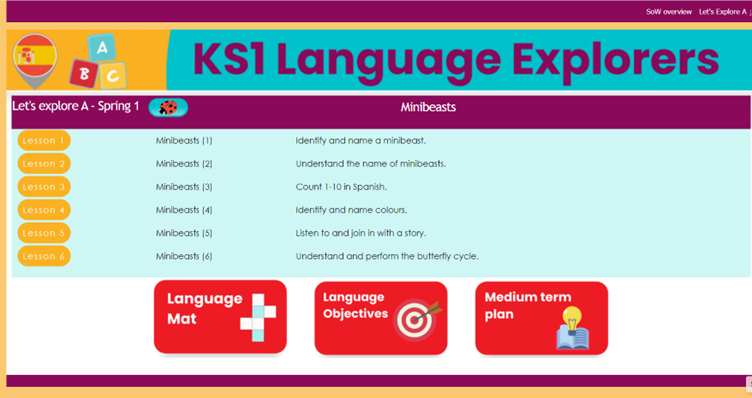
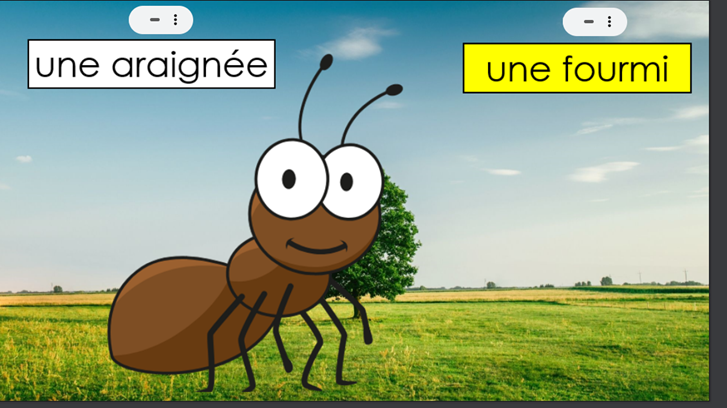
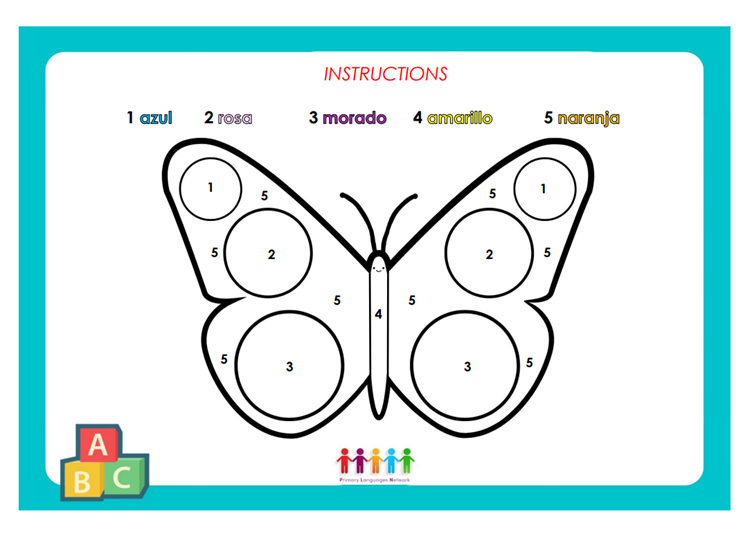
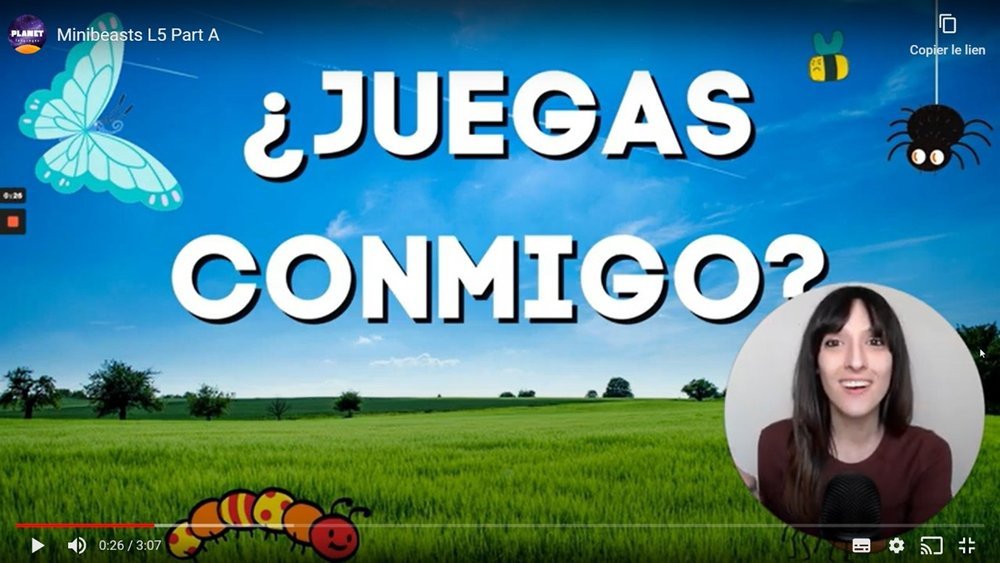
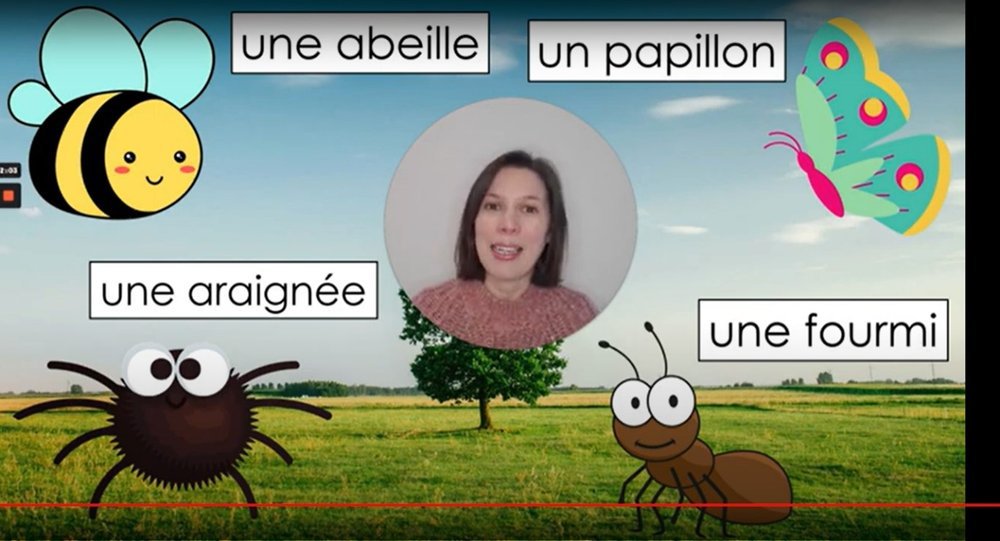
How long should your lessons be?
The lessons are planned for 15-30 minutes delivery with the option of the memory maker activity if you have longer sessions.
In Let’s Explore, children are exposed to the written words and there are opportunities for copywriting through the activity sheet in the memory maker ‘C’ part of the lesson.
What about phonics?
The teaching of phonics is embedded in the lessons through activities such as ‘stretchy words and bouncy words’ – children become familiar with playing with words and sounds and developing accurate pronunciation in a fun way.
Try it out!
The new KS1 Language Explorer is now ready for you to trial with ‘Let’s explore A’ live on the Primary Language Network VLE available to all members of PLN. The rest of the SOW is in development and launching fully in September 2023.
If you’re interested in finding out more about PLN and how we can support your school at KS1 and KS2 in French, Spanish or German then please get in touch !



